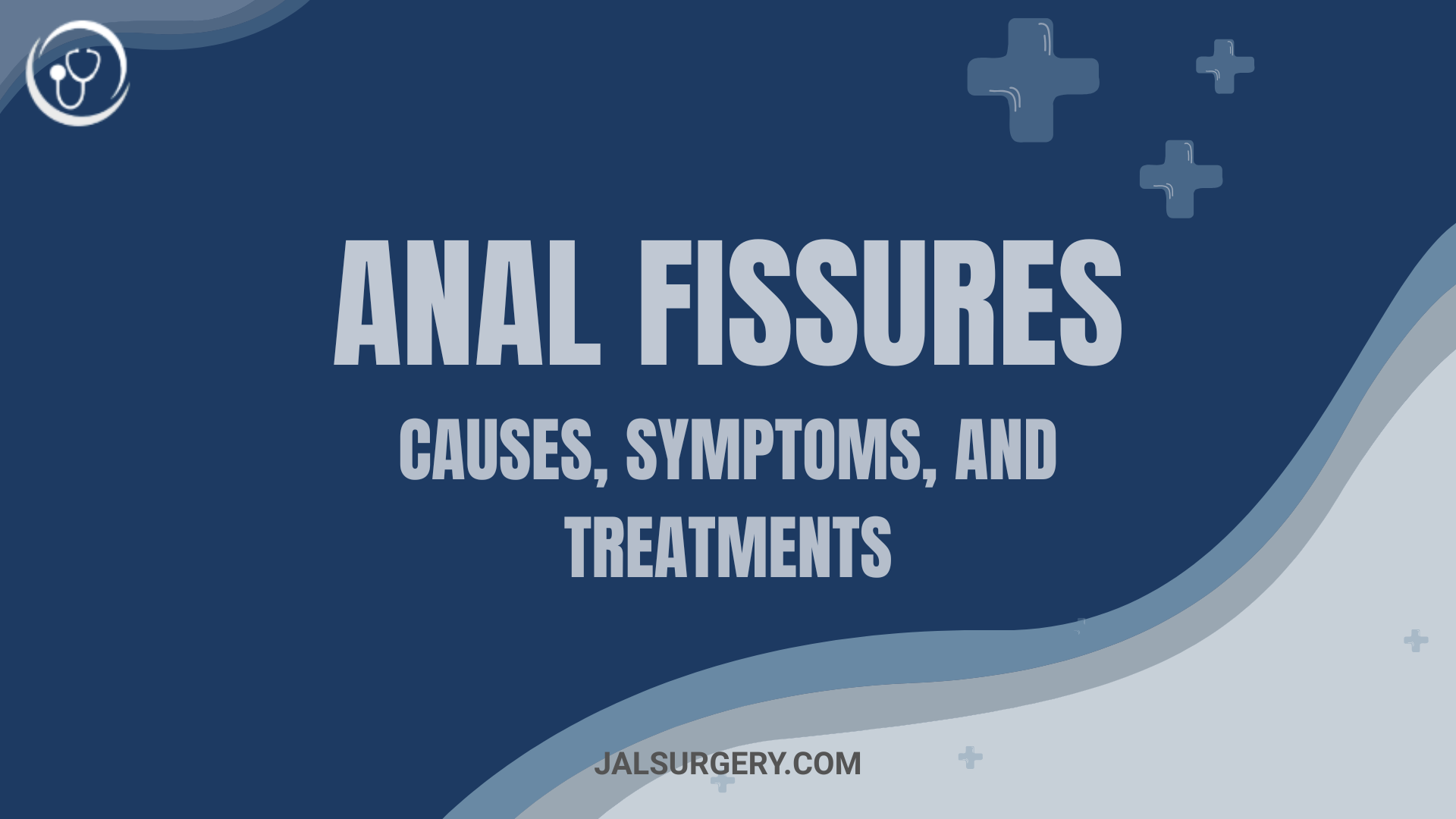An anal fissure is a small tear in the thin tissue (mucosa) lining the anus.
Although common and often very painful, it’s a condition we treat routinely at JAL Surgery with excellent outcomes.
Causes
Anal fissures usually develop when the anal canal is stretched beyond its capacity. Common triggers include:
● Constipation and hard stools – the most frequent cause
● Chronic diarrhoea
● Childbirth or trauma during delivery
● Inflammatory bowel disease (e.g. Crohn’s disease)
● Anal trauma (rare)
Tension in the internal anal sphincter (the ring of muscle around the anus) plays a key role—high resting pressure reduces blood flow and delays healing.
Symptoms
Typical features are:
● Sharp pain during and after bowel movements (often described as cutting or burning)
● Bright red bleeding on toilet paper or in the pan
● A visible crack or ulcer on examination
● Itching or irritation around the anus
If pain persists beyond a few weeks, the fissure is classed as chronic and usually needs more than simple home care.
Modern Treatment Options
Most fissures heal with early, conservative care. Current best practice includes:
1. Lifestyle and Medical Measures (first line)
● High-fibre diet and plenty of fluids to soften stools
● Warm sitz baths to relax the sphincter and relieve pain
● Prescription ointments such as glyceryl trinitrate (GTN) or diltiazem to relax the muscle and improve blood flow
2. Botulinum Toxin (Botox) Injection
A quick outpatient procedure that temporarily relaxes the sphincter to promote healing.
Evidence shows success rates of 70–80%, often avoiding surgery.
3. Surgical Treatment
For chronic or resistant fissures, lateral internal sphincterotomy remains the gold standard.
It involves a tiny cut in the sphincter muscle to reduce pressure and allow the tear to heal. Performed under a short general anaesthetic, recovery is usually rapid, and long-term success exceeds 90%.
Self-Care and Prevention
Preventing fissures from developing—or stopping them from returning—largely depends on maintaining healthy bowel habits. A few simple strategies can make a big difference:
-
Stay Hydrated: Drinking 6–8 glasses of water daily keeps stools soft and reduces straining.
-
Eat More Fibre: Whole grains, fruits, and vegetables add bulk and help stools pass smoothly.
-
Regular Exercise: Gentle activities like walking improve bowel function and circulation.
-
Avoid Straining: Spending long periods on the toilet can worsen fissures and haemorrhoids.
-
Prompt Treatment of Constipation or Diarrhoea: Addressing these early prevents unnecessary stress on the anal canal.
In many cases, these preventive measures alone can speed recovery and reduce the chances of recurrence.
When to See a Specialist
While mild fissures often heal with simple care, it’s important not to ignore ongoing symptoms. You should seek medical help if:
-
Pain continues for more than 2–3 weeks despite home treatment.
-
You notice repeated bleeding with bowel movements.
-
The fissure seems to keep coming back.
-
You have a history of inflammatory bowel disease, which can complicate healing.
A specialist can confirm the diagnosis, rule out other causes of anal pain or bleeding, and recommend the most effective treatment plan.
Living with and Recovering from an Anal Fissure
The good news is that most people make a full recovery with the right approach. For many, healing begins within a few weeks once constipation is addressed and the muscle is relaxed. Even if anal fissure surgery becomes necessary, outcomes are highly successful, with only a small risk of side effects such as minor changes in continence.
Patients often report a dramatic improvement in their quality of life once the fissure heals. Pain-free bowel movements restore confidence, and the constant worry about discomfort or bleeding disappears.
At JAL Surgery, we emphasize not only treating the fissure but also supporting long-term bowel health. This may involve working with you on dietary changes, stress management, and follow-up care to keep your digestive system running smoothly.
Why Choose JAL Surgery
At JAL Surgery, we offer:
● Full assessment to rule out underlying causes such as Crohn’s disease
● Access to all modern therapies, from prescription ointments to Botox and minimally invasive surgery
● Personalised aftercare and dietary advice to prevent recurrence
Conclusion
Anal fissures are painful but highly treatable. Early, expert care—from dietary measures to advanced procedures—can relieve pain and prevent chronic problems. If you’re struggling with anal pain or bleeding, seeking professional assessment ensures you get the right diagnosis and treatment, restoring comfort and confidence in your daily life.

